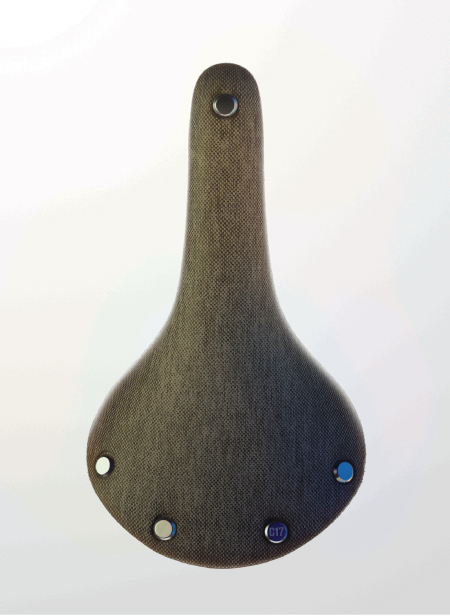Kelly Pollard looks at the Birmingham based company’s new cycling staple, their vulcanised rubber and organic woven cotton saddle
For over a century, Brooks England has been producing handmade leather saddles in its Birmingham factory. The metal nameplate on the rear of these saddles has become a status symbol for a generation of cyclists who view the pursuit as a lifestyle choice, and for whom the selection of saddle is tantamount to buying an Eames dining chair over an Ikea equivalent.
The latest product in the Brooks saddle range, the Cambium C17, marks an important departure from the company’s traditional choice of material. Made from vulcanised rubber and organic woven cotton, the Cambium is designed to replicate the flexibility and comfort of its leather counterparts, while offering a new shape that is waterproof, much lighter and easily assembled by the user.
“We selected rubber for its elasticity and natural provenance; cotton for its texture, look, and functional properties,” says Michela Raoss, communication manager at the Brooks factory in Italy, where the Cambium is made. Raoss adds that the Brooks design team created the Cambium, “in response to the changing needs of cyclists,” and that the development process involved six years of rigorous testing – in laboratories and on the road – before a result that maintained the hammock-like effect and shock absorbing characteristics of previous models was achieved.
The sustainable Cambium saddle continues Brooks’s long history of innovation, but still delivers the same smooth and comfortable ride that John Boultbee Brooks envisioned when he patented his first saddle back in 1882.
Kelly is a writer and curator




